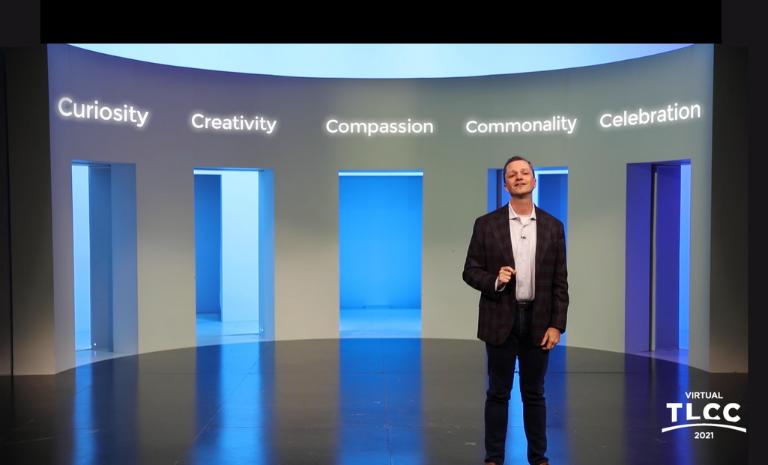Arts and Culture
Article
Insights & Innovation
50780096-c82a-4aa6-9b7a-f71a24c09926
5 min
https://edge.sitecorecloud.io/tessituraneab9a-tessiturane5642-staging-5396/media/Images/Discover-Images/Thought-Leadership/Five-Superpowers/joshua-woroniecki-lzh3hPtJz9c-unsplash-768x465.png?h=465&iar=0&w=768
From the Medicis to Apple, exploring the creative journey from arts & culture to breakthrough innovation.
Does arts & culture lead to innovation?

President & CEO, Tessitura
Does arts & culture lead to innovation?
12/13/2021
5 min
“Everywhere we look we find that ideas are getting harder to find,”
observed a group of researchers from Stanford University and MIT in a 2020 paper. This Atlantic article went on to note that “research productivity has declined sharply in a number of industries, including software, agriculture, and medicine.”
It is alarming to imagine we are living in a society where “ideas are getting harder to find,” and I wondered: can more arts & culture lead to more innovation?
The key ingredient of innovation: Creativity
Savvy business leaders have long known the importance of creativity to spur innovation. A survey by IBM of more than 1,500 chief executive officers ranked creativity as the number one factor for future success. Meanwhile, another study found that companies that embrace creativity outperform peers and competitors. Research into the world’s most innovative leaders found that they share a trait called “creative intelligence.”
“Creativity is just connecting things,” said Apple founder Steve Jobs, who used his creative intelligence to connect three disparate things — a music player, an internet browser, and a handheld phone — to create the world-changing iPhone, among many other innovations.
In Creative Acts for Curious People, Sarah Stein Greenberg of the Stanford d.school puts it this way: “Creative work requires you to become more open to things you find strange or unusual. Without strangeness, you are left only with sameness.”
Clearly, creativity leads to innovation. But how does a society become more creative in the first place?
Clearly, creativity leads to innovation. But how does a society become more creative in the first place?
In his book “The Medici Effect,” Frans Johansson suggests that the Renaissance began, in part, thanks to the wealthy Medici family, which brought artists, philosophers, scientists and other creative types together in Florence. “As these individuals connected,” he relates, “new ideas blossomed at the intersections of their respective fields, thereby spawning one of the most inventive eras in history.”
Johansson believes that innovation thrives when you connect creative people from a variety of backgrounds and disciplines.
A key driver of creativity: arts & culture
When asked about the birth of the first Apple Macintosh, Steve Jobs had this to say: “Part of what made the Macintosh great was the people working on it were musicians, and poets, and artists, and zoologists, and historians who also happened to be the best computer scientists in the world.”
“Part of what made the Macintosh great was the people working on it were musicians, and poets, and artists, and zoologists, and historians who also happened to be the best computer scientists in the world.”
— Steve Jobs
Beyond the historical (the Medici effect) and anecdotal (the Macintosh team), there is research showing the direct line from arts & culture to innovative thinking. A National Science Foundation-sponsored study found conclusively that arts-based innovation training improved creative thinking skills, critical thinking, problem identification, and problem solving in high school students.
Meanwhile, another study found that businesses in rural parts of the United States were more likely to be innovative in their practices when they were located near performing arts centers. Plenty more studies demonstrate the effect of arts and culture on innovative thinking.
Which returns us to the question: Can more arts & culture lead to more innovation?
Anecdotes and research agree: Yes.
From arts & culture to innovative societies
Still, as the Atlantic article notes, “Today’s scientists are less likely to publish truly new ideas, businesses are struggling to break into the market with new ideas… and we are less likely than previous generations to build institutions that advance new ideas.”
The author of that article presented the dire facts without suggesting a solution. I’m happy to take a swing.
I believe our loss of innovative thinking can tie back, in part, to the multi-decade reduction in support for arts and culture in our schools and communities. Creativity is like a muscle which grows stronger through exercise. When arts and culture declines in our communities, we shouldn’t be surprised that our idea creation is atrophying as well.
Happily, the research shows the opposite is also true. Arts & culture fosters creativity, creativity leads to innovation, and innovation helps solve many of the world’s biggest problems.
Want to invest in innovation for a better future? Start by investing in arts and culture.
• • •
Tessitura has a vision: Working toward a day when every human in every community we serve has arts and culture as a meaningful part of their life.
This is the third in a series of posts where Andrew explores ways that cultural organizations can work toward that vision. You can see Andrew’s talk on the topic here: The Five Superpowers of Arts and Culture.
Top photo image credit: Joshua Woroniecki
Topics
Arts & Culture

Why Arts & Culture is Essential Today
Arts & Culture
Healing the world requires five human traits: arts & culture delivers them all.

A contactless customer journey with a personal touch
Arts & Culture / Business Strategy / COVID-19 / Technology / Ticketing & Admissions
How Georgia Aquarium creates a visitor-focused experience
